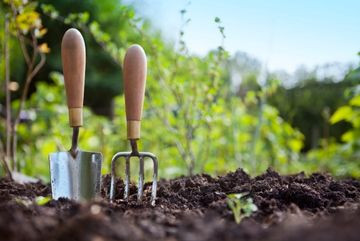Plant the Rainbow: 3 Must-Haves for a Natural Dye Garden
Posted by Elizabeth on Mar 10th 2023
Plants marked with an * and highlighted are listed as a noxious weed in one or more states. Please check with your local agricultural extension office before growing under conditions that could lead to dissemination.
One of my favorite times of year is the beginning of spring. When the daffodils bloom and the trees begin to bud, you know that winter is on its way out. With spring comes a sense of opportunity, especially to learn something new with the little bit of extra daylight. Why not take advantage of all the new growth and learn how to use plants as natural dyes!
A lot of people have already started planning their 2023 gardens, but it's not too late to add some plants that make magnificent natural dyes into the mix. In fact, your flower beds might already be full of natural dyes like black-eyed Susan, marigolds, zinnia, and hollyhock just waiting to be used.
The resulting color depends on the plant, so make sure when you’re planning your plants to have a well rounded mix of color to pick from! Or, just plant a couple red, yellow, and blue dye plants that you can overdye to create oranges, purples, and greens.
To give you an idea of which plants produce certain colors, here is a small list of easy growing dye plants (at least in North America):
Red: madder root, dyer's woodruff
Orange: carrots, barberry shrub*, tickseed, sulfur cosmos,
Yellow: marigold, golden marguerite, weld
Green: nettle*, lily of the valley leaves
Blue: indigo, hollyhock, woad*
Purple: dandelion roots, purple basil
For a full list of natural dyes and more information on mordants click here.
Responsible Gardening Practices
Depending on your location, some natural plant dyes may be classified as an invasive plant species and should not be planted.
Some online resources that discuss invasive plant species:
https://www.fs.usda.gov/wildflowers/invasives/index.shtml
If you have any questions, we recommend you contact your local extension office for clarification before you plant your dye garden. Information on locating your local extension office and be found at this link:
Dye Garden Essentials
If you’re short on space that gets adequate sunlight, make sure you have these must-have dye plants as baseline for your reds, blues, and yellows.
Marigold - not only does it produce lovely yellows and oranges, the plant itself is a pest repellent! On protein fibers, marigold produces vibrant yellow, and on cotton and linen the color is paler and more subdued.
Dyer’s Knotweed (Japanese Indigo) - While the flowers are pink, the leaves are what yield a soft to medium blue hue.
St. John’s Wort* - Capable of producing reds, pinks, yellows, and greens!
And if you have no green thumb whatsoever, we carry a variety of powders, roots, and other dye materials that are ready for the dye pot!
Remember that you will need to use a mordant to get color to stick to your yarn/fabric. Before you start dyeing make sure you take all of the necessary safety precautions!
More Natural Dyeing Resources
For more in depth information on utilizing natural dyes here are a few books we love:
Grow, Cook, Dye, Wear by Bella Gonshorovitz
Natural Dyeing by Kathryn Davey
The Wild Dyer by Abigail Booth
Harvesting Color by Rebecca Burgess

